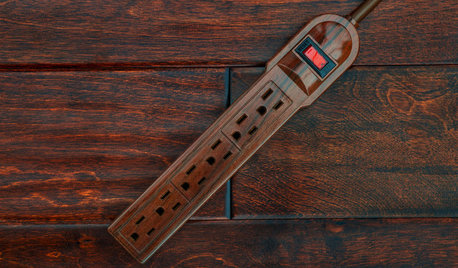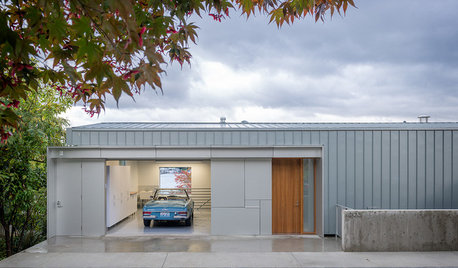Going Organic
aman32
14 years ago
Related Stories

SHOP HOUZZShop Houzz: Go Go Gadgets
Shop these new and improved tech gadgets, from charging stations to speakers
Full Story0

DECLUTTERINGHow to Declutter Without Going Minimalist
Here are 10 ways to get your home tidy and organized while keeping that personal touch
Full Story
MOST POPULAR10 Reasons to Get Rid of More Clutter
From a calmer mind to a more workable closet, the benefits of streamlining are just a few trash bags away
Full Story
DECORATING GUIDESA By-the-Numbers Guide to Going Graphic
Adding life — not to mention organization — to your space can be as easy as 1, 2, 3 with a little paint and imagination
Full Story
BATHROOM DESIGNGo Au Naturel in the Bath With Beautiful Stone
Add rocks and pebbles to your bathroom design for organic texture and practicality too
Full Story
PRODUCT PICKSGuest Picks: Go Bright and Mod in the Home Office
Be inspired, organized and productive in a home office filled with sleek furnishings and colorful accessories
Full Story
KITCHEN DESIGNSee-Through Refrigerators Dare to Go Bare
Glass-front fridge doors put your food and drinks on display, for better or worse. See the benefits and disadvantages
Full Story
EVENTS2016 Palm Springs Modernism Week Tickets Go on Sale
November 1 is the first day to buy tickets to the February festival celebrating 20th-century architecture and design
Full Story
ECLECTIC STYLEBeautiful Clutter? These 13 Rooms Say Go for It
No need to haul cartons to Goodwill for a picture-perfect room. You can have a well-decorated home and all your stuff too
Full Story
LIFE10 Beautifully Simple Ways to Go Greener in the New Year
You may just find more green in your wallet along the way
Full Story





Kimmsr
dchall_san_antonio
Related Professionals
Allentown Landscape Architects & Landscape Designers · Fitchburg Landscape Architects & Landscape Designers · Barrington Landscape Contractors · Canyon Lake Landscape Contractors · Chesapeake Ranch Estates Landscape Contractors · East Haven Landscape Contractors · Fort Myers Landscape Contractors · Homewood Landscape Contractors · Mashpee Landscape Contractors · Woodbury Landscape Contractors · Huntsville Swimming Pool Builders · Lake Forest Swimming Pool Builders · Lake Jackson Fence Contractors · Wilmette Fence Contractors · Boulder City Fence Contractorsaman32Original Author
bpgreen
dchall_san_antonio
Kimmsr
aman32Original Author
dchall_san_antonio
bpgreen
aman32Original Author
bpgreen
aman32Original Author
aman32Original Author
bpgreen
dchall_san_antonio
aman32Original Author
organicnoob
aman32Original Author